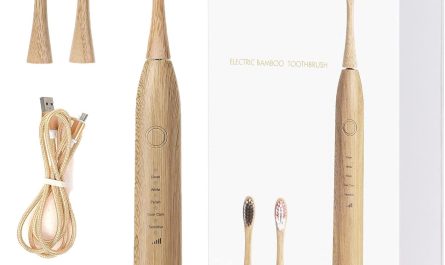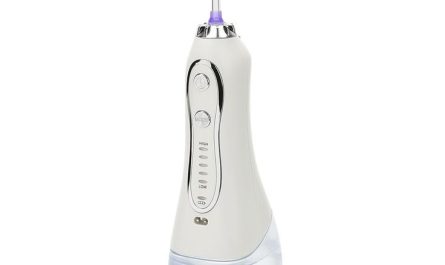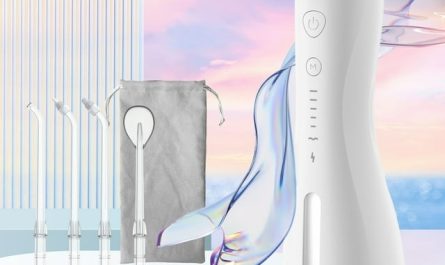What is a Water Pick Flosser?
A water pick flosser is a dental device. It uses a stream of water to remove food and plaque. This stream comes from a handheld wand. People use it to clean between their teeth and along the gumline. It is an alternative to traditional string floss. Many dentists recommend water pick flossers. They are also known as oral irrigators or dental water jets. They are easy to use and gentle on the gums.
Using a water pick flosser can help reduce gum disease risk. It is an excellent tool for those with braces or other dental work. The water stream cleans hard-to-reach areas. It also massages the gums, which can improve gum health. People with dexterity issues find water pick flossers helpful. They are easier to handle than string floss for some.
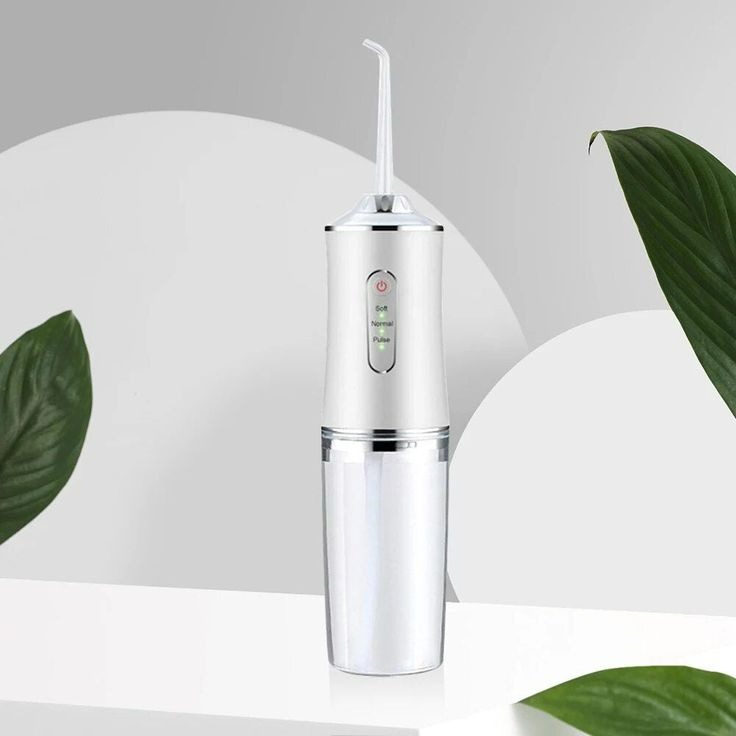
The Benefits of Using a Water Pick Flosser
The use of a water pick flosser comes with various benefits that cater to dental health. Here are some of the most significant advantages you can expect when incorporating a water pick flosser into your daily oral hygiene routine:
- Improves Gum Health: Water pick flossers get deep between teeth and below the gumline, reducing the presence of plaque and bacteria that can lead to gum disease.
- Effective for Braces: For those with braces, water pick flossers can navigate around wires and brackets, ensuring a thorough clean where string floss might struggle.
- Helps with Implants: Individuals with dental implants can benefit greatly from water pick flossers, as they safely clean around implants without causing damage.
- Ease of Use: Many people find water pick flossers easier to use than traditional floss, especially for individuals with limited dexterity or arthritis.
- Targets Hard-to-Reach Areas: The water stream can reach places that may be missed by regular flossing, like the back molars.
- Massages Gums: The gentle stream of water not only cleans but also massages the gums, which can increase blood circulation and promote gum health.
Regular use of a water pick flosser is an easy step to boost your oral hygiene regime. It’s an investment in your dental health, potentially reducing future dental problems and contributing to overall well-being.
How to Choose the Right Water Pick Flosser for You
Choosing the right water pick flosser is essential for your oral health routine. To find the best match for your needs, consider the following aspects:
- Pressure Settings: Look for a water pick flosser with adjustable pressure. This allows you to customize the force of the water stream.
- Tip Varieties: Some flossers come with different tip types. These can target specific dental work like braces or implants.
- Ease of Use: Check if the flosser is user-friendly. It should fit comfortably in your hand and be easy to operate.
- Size and Portability: Consider the size if you have limited bathroom space or plan to travel with it. Compact models are handy for small spaces or on the go.
- Water Capacity: The reservoir size determines how long you can floss before refilling. A larger tank means fewer interruptions.
- Power Source: Some flossers are cordless and battery-operated. Others need to be plugged in. Choose which is convenient for you.
- Warranty and Support: A good warranty can give you confidence in your purchase. Also, consider the manufacturer’s customer support reputation.
Evaluating these features will help you pick a water pick flosser that works well for your daily dental care. Always remember that investing in a model that you will use consistently is key to achieving better dental health.

Step-by-Step Guide: How to Use a Water Pick Flosser Effectively
To ensure you get the most out of your water pick flosser, follow these simple steps:
- Fill the Reservoir: Begin by filling the reservoir with warm water. This prevents shock to sensitive teeth and gums.
- Select the Tip: Attach the appropriate tip for your needs. If you have braces, use an orthodontic tip.
- Adjust the Pressure: Start with the lowest pressure setting. Increase it gradually to find a comfortable level.
- Lean Over the Sink: To avoid splashes, lean over the sink and keep your mouth slightly open.
- Guide the Tip: Place the tip at a 90-degree angle to the teeth. Gently glide it along the gumline and between teeth.
- Clean Each Section: Spend a few seconds on each tooth. Ensure you cover all areas, including the back molars.
- Empty the Reservoir: After each use, empty any remaining water to prevent bacteria growth.
- Rinse the Tip: Remove the tip and rinse it under running water. This will extend its life.
Using a water pick flosser is easy once you know the steps. With regular use, you can improve your dental health significantly. Remember to be gentle and take your time as you learn to use the device effectively.
Maintaining Your Water Pick Flosser: Cleaning and Upkeep
To keep your water pick flosser working well, you must clean and maintain it regularly. Here’s how to do it:
- Empty and Dry: After each use, empty the water reservoir. Let it air dry to stop bacteria from growing.
- Clean Reservoir: Once a week, clean the reservoir. You can often do this in the dishwasher if it’s allowed by the manufacturer.
- Wipe the Handle: Use a soft cloth to wipe down the handle and the body of the flosser. This keeps it clean from grime and buildup.
- Clean the Tips: Remove the tips after use and rinse them under warm water. Replace them every 3-6 months.
- Check for Deposits: Look for mineral deposits in the flosser. If you see any, use white vinegar to dissolve them. Simply run a mixture of vinegar and water through the unit.
- Inspect for Damage: Regularly check the water pick flosser for any damage. Look for cracks or leaks in the tubing.
By following these steps, you can extend the life of your water pick flosser. A well-maintained flosser ensures effective cleaning every time you use it. Remember to consult the user manual for any specific maintenance guidelines for your model.
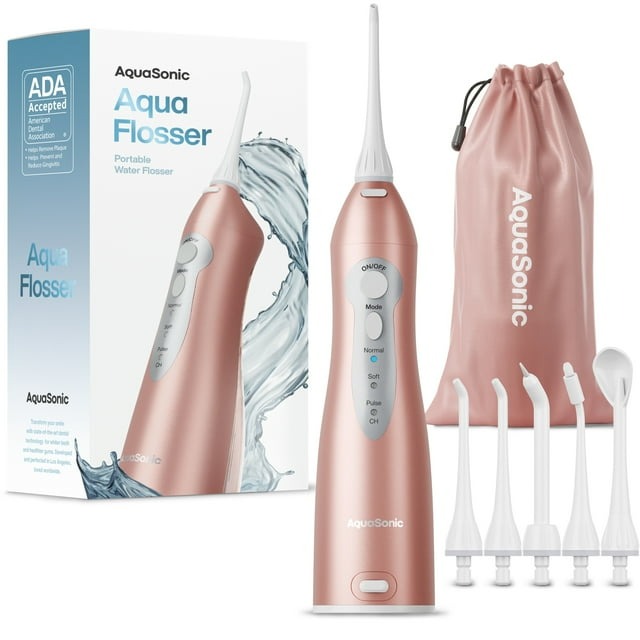
Common Mistakes to Avoid When Using Water Pick Flossers
Utilizing a water pick flosser properly is as important as choosing the right one. Even with its many benefits, mistakes can hinder its effectiveness or even damage your gums and device. Here are common errors to watch out for:
- Ignoring the Instructions: Always read the manual. Each model has its quirks and best use practices.
- Using High Pressure Too Soon: Start low and increase pressure gradually. Your gums need to adapt.
- Not Using Warm Water: Cold water can shock sensitive teeth and gums. Use warm water instead.
- Skipping Regular Cleaning: Don’t let bacteria build up. Clean the reservoir and tips often.
- Forcing the Tip Between Teeth: Let the water flow gently. Forcing it can damage gums or the device.
- Rushing the Process: Take time to thoroughly clean each tooth and the gumline.
- Neglecting Back Teeth: Don’t miss the back molars. They are as important as front teeth.
- Overlooking Maintenance: Keep an eye on the nozzle and hose. Replace them when worn out.
By avoiding these common pitfalls, you’ll ensure that your water pick flosser is a valuable ally in your oral hygiene routine. These simple reminders can help maximize the benefits while protecting your dental health.
Water Pick Flossers vs. Traditional Flossing: A Comparison
When it comes to maintaining oral hygiene, both water pick flossers and traditional flossing play vital roles. However, they offer different benefits and may suit different individuals depending on their needs. Let’s compare the two to help you make an informed decision about your dental care routine.
- Effectiveness in Cleaning: Water pick flossers are excellent for cleaning around braces and dental implants. Traditional floss is best for scraping off plaque directly from the teeth.
- Ease of Use: A water pick flosser can be easier to use for those with limited dexterity. String floss requires more manual skill.
- Gum Health: Water flossers can reach below the gumline and are gentle on the gums. String floss can sometimes cause minor bleeding, especially if not used carefully.
- Portability: Traditional floss is small and easy to carry with you anywhere. Water pick flossers are larger and less travel-friendly.
- Time Efficiency: A water pick flosser can clean all your teeth quickly. Flossing with string can take more time and effort.
- Cost: Initial investment in a water pick flosser is higher than buying string floss. But it may save money on dental work in the long run.
- Sustainability: Traditional floss is often not recyclable and can be wasteful. Water pick flossers do not generate waste with each use.
- Maintenance: Water flossers require regular cleaning and charging or battery replacement. String floss is maintenance-free.
In conclusion, both water pick flossers and traditional flossing have their places in dental care routines. A water pick flosser is a powerful tool for those with special dental needs or who prefer a more convenient option. Traditional flossing is simple, affordable, and effective for everyday use. The best choice depends on your personal preferences, lifestyle, and specific dental health needs.
FAQs: Answers to Common Questions About Water Pick Flossers
Water pick flossers are an innovative dental hygiene tool, and naturally, there are many questions potential users may have. Below are answers to some of the most frequently asked questions about these devices to help you understand how they can fit into your daily routine.
- How often should I use my water pick flosser?Use it daily. It’s best to incorporate it into your routine, just like brushing.
- Can water pick flossers replace traditional floss?Not entirely. They are an alternative but traditional flossing still has its place.
- Is a water pick flosser safe for sensitive gums?Yes, with adjustable pressure settings, they are gentle on sensitive gums.
- Are water pick flossers effective against plaque?They excel at removing plaque from below the gumline and between teeth.
- How long do water pick flossers last?With proper maintenance, they can last several years.
- Can children use water pick flossers?Yes, but supervise young children to ensure they use it safely.
- Will using a water pick flosser cause bleeding gums?If you have gum disease, some initial bleeding might occur. Consult your dentist.
- Are water pick flossers noisy?Some models make noise, but there are quieter options available.
These simple answers should help clear up common concerns and show how a water pick flosser can be a beneficial addition to your oral hygiene practices.

